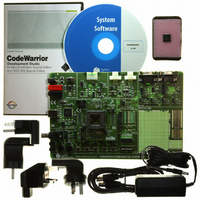EVB9S08DZ60 Freescale Semiconductor, EVB9S08DZ60 Datasheet - Page 198

EVB9S08DZ60
Manufacturer Part Number
EVB9S08DZ60
Description
BOARD EVAL FOR 9S08DZ60
Manufacturer
Freescale Semiconductor
Type
MCUr
Datasheets
1.DEMO9S08DZ60.pdf
(416 pages)
2.EVB9S08DZ60.pdf
(2 pages)
3.EVB9S08DZ60.pdf
(32 pages)
4.EVB9S08DZ60.pdf
(13 pages)
5.EVB9S08DZ60.pdf
(4 pages)
Specifications of EVB9S08DZ60
Contents
Module and Misc Hardware
Processor To Be Evaluated
S08D
Data Bus Width
8 bit
Interface Type
RS-232, USB
Silicon Manufacturer
Freescale
Core Architecture
HCS08
Core Sub-architecture
HCS08
Silicon Core Number
MC9S08
Silicon Family Name
S08D
Kit Contents
Board Cables CD Power Supply
Rohs Compliant
Yes
For Use With/related Products
MC9S08DZ60
Lead Free Status / RoHS Status
Lead free / RoHS Compliant
Available stocks
Company
Part Number
Manufacturer
Quantity
Price
Company:
Part Number:
EVB9S08DZ60
Manufacturer:
TI
Quantity:
101
- DEMO9S08DZ60 PDF datasheet
- EVB9S08DZ60 PDF datasheet #2
- EVB9S08DZ60 PDF datasheet #3
- EVB9S08DZ60 PDF datasheet #4
- EVB9S08DZ60 PDF datasheet #5
- Current page: 198 of 416
- Download datasheet (5Mb)
Chapter 10 Analog-to-Digital Converter (S08ADC12V1)
For 12-bit conversions the code transitions only after the full code width is present, so the quantization
error is −1 lsb to 0 lsb and the code width of each step is 1 lsb.
10.6.2.5
The ADC may also exhibit non-linearity of several forms. Every effort has been made to reduce these
errors but the system should be aware of them because they affect overall accuracy. These errors are:
10.6.2.6
Analog-to-digital converters are susceptible to three special forms of error. These are code jitter,
non-monotonicity, and missing codes.
Code jitter is when, at certain points, a given input voltage converts to one of two values when sampled
repeatedly. Ideally, when the input voltage is infinitesimally smaller than the transition voltage, the
converter yields the lower code (and vice-versa). However, even small amounts of system noise can cause
the converter to be indeterminate (between two codes) for a range of input voltages around the transition
voltage. This range is normally around 1/2lsb in 8-bit or 10-bit mode, or around 2 lsb in 12-bit mode, and
increases with noise.
This error may be reduced by repeatedly sampling the input and averaging the result. Additionally the
techniques discussed in
Non-monotonicity is defined as when, except for code jitter, the converter converts to a lower code for a
higher input voltage. Missing codes are those values never converted for any input value.
In 8-bit or 10-bit mode, the ADC is guaranteed to be monotonic and have no missing codes.
198
•
•
•
•
•
Zero-scale error (E
the actual code width of the first conversion and the ideal code width (1/2 lsb in 8-bit or 10-bit
modes and 1 lsb in 12-bit mode). If the first conversion is 0x001, the difference between the actual
0x001 code width and its ideal (1 lsb) is used.
Full-scale error (E
the last conversion and the ideal code width (1.5 lsb in 8-bit or 10-bit modes and 1
mode). If the last conversion is 0x3FE, the difference between the actual 0x3FE code width and its
ideal (1
Differential non-linearity (DNL) — This error is defined as the worst-case difference between the
actual code width and the ideal code width for all conversions.
Integral non-linearity (INL) — This error is defined as the highest-value the (absolute value of the)
running sum of DNL achieves. More simply, this is the worst-case difference of the actual
transition voltage to a given code and its corresponding ideal transition voltage, for all codes.
Total unadjusted error (TUE) — This error is defined as the difference between the actual transfer
function and the ideal straight-line transfer function and includes all forms of error.
Linearity Errors
Code Jitter, Non-Monotonicity, and Missing Codes
LSB
) is used.
Section 10.6.2.3
FS
ZS
) — This error is defined as the difference between the actual code width of
) (sometimes called offset) — This error is defined as the difference between
MC9S08DZ60 Series Data Sheet, Rev. 4
reduces this error.
Freescale Semiconductor
LSB
in 12-bit
Related parts for EVB9S08DZ60
Image
Part Number
Description
Manufacturer
Datasheet
Request
R
Part Number:
Description:
Manufacturer:
Freescale Semiconductor, Inc
Datasheet:
Part Number:
Description:
Manufacturer:
Freescale Semiconductor, Inc
Datasheet:
Part Number:
Description:
Manufacturer:
Freescale Semiconductor, Inc
Datasheet:
Part Number:
Description:
Manufacturer:
Freescale Semiconductor, Inc
Datasheet:
Part Number:
Description:
Manufacturer:
Freescale Semiconductor, Inc
Datasheet:
Part Number:
Description:
Manufacturer:
Freescale Semiconductor, Inc
Datasheet:
Part Number:
Description:
Manufacturer:
Freescale Semiconductor, Inc
Datasheet:
Part Number:
Description:
Manufacturer:
Freescale Semiconductor, Inc
Datasheet:
Part Number:
Description:
Manufacturer:
Freescale Semiconductor, Inc
Datasheet:
Part Number:
Description:
Manufacturer:
Freescale Semiconductor, Inc
Datasheet:
Part Number:
Description:
Manufacturer:
Freescale Semiconductor, Inc
Datasheet:
Part Number:
Description:
Manufacturer:
Freescale Semiconductor, Inc
Datasheet:
Part Number:
Description:
Manufacturer:
Freescale Semiconductor, Inc
Datasheet:
Part Number:
Description:
Manufacturer:
Freescale Semiconductor, Inc
Datasheet:
Part Number:
Description:
Manufacturer:
Freescale Semiconductor, Inc
Datasheet:











